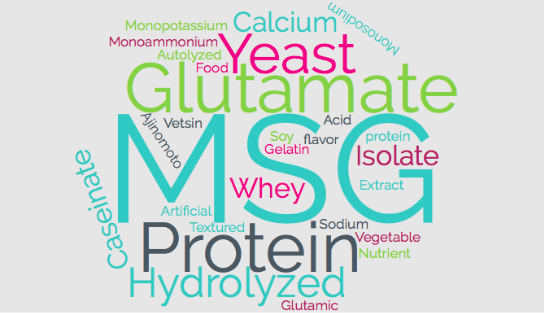
You’ve probably heard of MSG (monosodium glutamate), and you may have even heard that it might be bad for you. But what is it exactly, and is it bad for your brain?
What is MSG?
MSG is the most widely used food additive in the world, used as a flavor enhancer. It’s used to stimulate our taste buds and to make foods taste better, and it’s what allows foods to be made with fewer natural ingredients – such as fewer chickens in chicken noodle soup (gross!).
MSG is made from glutamic acid, which is actually an amino acid that is found in our body’s cells and also acts as a neurotransmitter in the brain. It naturally occurs in foods such as tomatoes, peas, mushrooms, and dairy, in a form known as l-glutamic acid. This is considered to be “bound” glutamic acid, and can be broken down through digestion and delivered to our glutamate receptors throughout our body and brain, where it needs to be.
Monosodium glutamate is a different story. The bound l-glutamic acid, normally harmless to us, is broken down and made “free” through a variety of synthetic processes using strong chemicals or enzymes. Sodium is then added to make it more soluble. It is now MSG, and may contain impurities that are unwanted by-products of the manufacturing process. Some of these may be carcinogenic (cancer-causing), and the resulting D-glutamic acid is something that is rarely found in nature, and is not recognized by our bodies.
Because it is no longer the l-glutamic acid our bodies recognize, there is no digestive process to break it down. It now can quickly enter our bodies, including our blood stream, and can raise the blood’s glutamate levels to toxic ranges.
According to Dr. Russell Blaylock, author of Excitoxins, the Taste That Kills, when neurons in the brain are exposed to MSG, they become overexcited and quickly fire off impulses until they reach a state of extreme exhaustion. Several hours later these neurons die off, as if they were excited to death. This is why MSG is known as an “excitotoxin.”
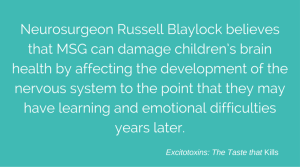
How MSG Can Affect the Brain
To explain this a little better, it’s important to know some of these terms when we’re talking about the brain. This looks complicated, but I promise we’re only looking at a couple of things, so stick with me!
Neurons are the individual nerve cells that make up the nervous system. They receive information from other neurons through their branches (dendrites) and cell body.
Dendrites are the extensions, or what look like branches coming off of the neuron, that pick up messages from other neurons, and then transmit it to the cell body of the neuron.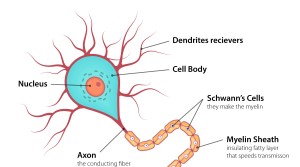
Neurotransmitters are the chemical messengers, relaying information between neurons. They send signals for mental processes and emotions, as well as sending messages to the muscles for movement and major organs (such as the lungs for breathing).
Will avoiding MSG help lessen symptoms of ADHD?
This is definitely a loaded question, but is definitely something worth considering. MSG is one of the ingredients I recommend avoiding if you are sensitive to it (symptoms include headaches, heart palpitations, tingling, feelings of face tightening, etc.), but also if you or your child has a learning difficulty, behavior issues, or ADHD. Exposure to toxins through food and environment can increase difficulties in children who are already struggling in those areas.
It is a well-known fact that there are neurotransmitters that don’t function normally in ADHD, including dopamine, norepinephrine, serotonin, and acetylcholine, and most of these are low in those with ADHD.
- Dopamine is associated with being the “pleasure system” of the brain and allows us to feel enjoyment, but it is also responsible for behavior regulation, decision making, and is also involved in focus, learning, and attention.
- Serotonin plays a role in mood and depression, so low levels of it can contribute to anxiety and depression, both of which are common in ADHD. Low levels can also contribute to aggressive behavior.
- Acetylcholine is involved in attention, and also has a role in learning and memory.
- Norepinephrine is involved in focus and helps to filter out unimportant stimuli.
Numerous studies have revealed that feeding MSG to pregnant animals produced a type of learning difficulty similar to ADD. Their offspring didn’t have noticeable differences in simple learning, but showed “profound” differences when it came to learning more complex things.
Follow-up studies of these same offspring found a reduction of 80% of acetylcholine and a 50% reduction in norepinephrine levels in the frontal lobe of the brain (Blaylock). If you’re familiar with ADD/ADHD, you may be familiar with the prefrontal cortex, which is located in the frontal lobe.
This part of the brain plays a role in self-regulation (behavior and making good choices), memory, language and speech, mood, and social behavior. It’s also responsible for “executive function” skills, which includes time management, multi-tasking, and the ability to start tasks. So if there are abnormalities in the prefrontal cortex, it’s easy to see why your child may have difficulties with starting homework, making plans, organizing themselves, or controlling their behavior.
In another study, researchers injected infant male rats with MSG and then later studied the composition and the number of neurons of the prefrontal cortex in the adult mice. They found fewer neurons and shorter dendrites with less “branching out,” compared to the control group. This means the cells in the brain are unable to communicate effectively, and messages might not be getting to where they need to go.
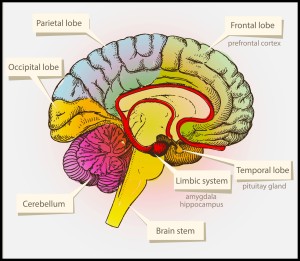
Where is MSG found?
MSG is the most widely used food additive in the world, so it can be pretty tough to find foods that are truly MSG-free. It can be found in salad dressings, almost all snack foods (chips, crackers, etc.), sauces, and even spices. It’s also heavily used in restaurant foods.
The problem is that there are over 40 ingredients that contain MSG, so the label might not even say monosodium glutamate on it! This is how some companies can say “Contains no MSG” on the front of the label, but then you see that little symbol next to it. On the back of the label it will say, “Except for that which naturally occurs in autolyzed yeast extract.” So then it’s not an MSG-free product – no wonder it’s so hard to find!
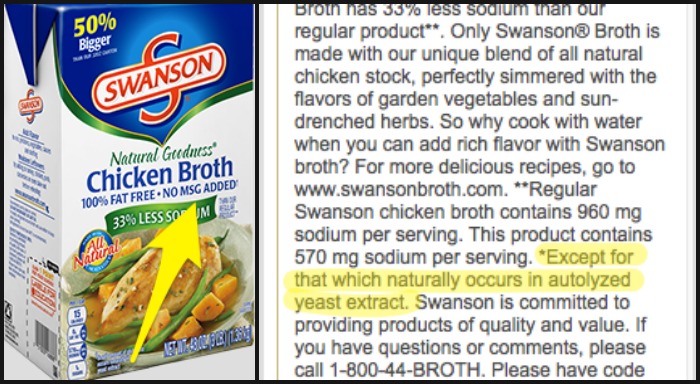
If you really want to be shocked at other ways it’s hidden, beware of products with the ingredient “natural flavors.” It often hides in there, and some natural flavors can be made up of over 100 ingredients. Be sure to carefully check your labels for all of the ingredients – it’s common to find foods that have several sources of MSG listed.
So should MSG be avoided?
My opinion is yes. While there is a lot of debate surrounding this ingredient, there is also a lot of research in peer-reviewed medical journals stating the risks and documenting brain lesions, cell death, and abnormal structures and numbers of neurons when exposed to MSG. While most of these studies have occurred in animal studies, it has been found that when humans are exposed to MSG, the levels of it in our blood rise higher than that of an animal’s.
There is also evidence of children’s behavior improving and ADHD symptoms lessening when ADHD is removed from the diet. According to Patrick Holford, author of Optimum Nutrition for Your Child’s Mind, a study conducted by the Hyperactive Children’s Support Group found that 60% of children in that study reacted to MSG.
If you or your child has a condition such as learning disorders or ADHD, or if there are neurological issues you are concerned about, do your research and what you feel is best for your family. MSG found in a lot of processed foods and things that really aren’t good for us anyway, so it really can’t hurt to avoid it!
March 03, 2016, from http://www.sciencedirect.com/science/article/pii/ 016501739500016XAnglesey, D. L. (2007).
González-Burgos, I., Pérez-Vega, M., & Beas-Zárate, C. (2001). Neonatal exposure to monosodium glutamate induces cell death and dendritic hypotrophy in rat prefrontocortical pyramidal neurons. Neuroscience Letters, 297(2), 69-72. Retrieved from http://www.ncbi.nlm.nih.gov/pubmed/12376189
Hasselmo, M. E. (2006). The role of acetylcholine in learning and memory. Current Opinion in Neurobiology, 16(6), 710-715. Retrieved from http://www.ncbi.nlm.nih.gov/pmc/articles/PMC2659740/
Hidden Sources of MSG. (n.d.). Retrieved March 03, 2016, from http://www.truthinlabeling.org/hiddensources.html
Nigg, J. T., & Holton, K. (2014). Restriction and Elimination Diets in ADHD Treatment. Child and Adolescent Psychiatric Clinics of North America, 23(4), 937-953. Retrieved from http://www.ncbi.nlm.nih.gov/pmc/articles/PMC4322780/
How do we know that MSG causes brain damage and neuroendocrine disorders.(n.d.). Retrieved March 03, 2016, from http://www.truthinlabeling.org/HowDoWeKnowMSGcauses.html
